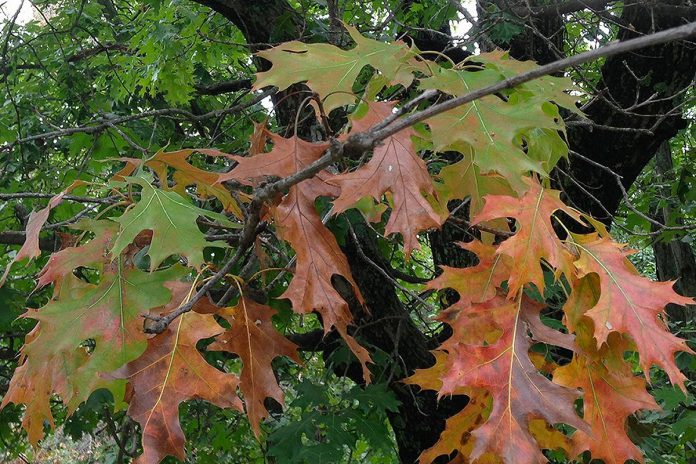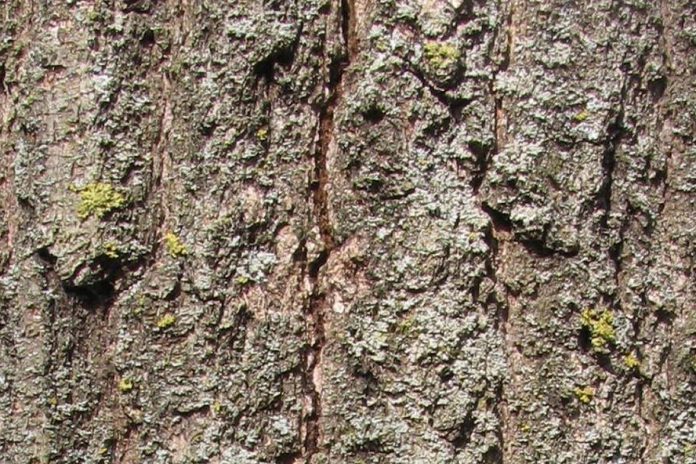
Kawartha Conservation is urging local landowners to be aware of a devastating fungal disease targeting oak trees that has been confirmed in Canada for the first time.
Oak wilt is a disease caused by the fungus Bretziella fagacearum. It was first recognized as a significant forest pest in 1944 in Wisconsin and is now known to occur in 24 states within the U.S.
In 2016, it was detected in Michigan less than one kilometre from Canada. Insect samples collected in 2019 from traps placed along the Ontario border tested positive for oak wilt DNA. In May of this year, oak wilt was discovered in a residential area in Niagara Falls, Ontario.
The fungus spreads from infected oak trees to healthy oak trees on the back of the sap beetle that likes to drink the sap from fresh wounds (like a pruned limb, broken branch, or cut-down tree). Once a tree is infected, the fungus can spread to healthy neighboring oak trees through root system connections.
“Oak wilt can quickly spread from one tree to another, leading to devastating losses within the oak population if not adequately addressed,” says Colleen Cathcart, forestry and landowner services technician at Kawartha Conservation, in a media release.
The signs of oak wilt are: dull green, brown, or yellow leaves; cracks in the trunk; white, grey, or black fungus; and early and sudden leaf drop. Red oaks are more susceptible to the fungus, while white oaks have been showing some tolerance to the fungus, with slower symptoms.

If you suspect a tree has been infected with oak wilt, report it immediately to the Canadian Food Inspection Agency (CFIA).
To prevent the spread of oak wilt, avoid pruning or otherwise damaging oak trees between April and October. During the cold months, the fungal spores are less likely to be transmitted, reducing the risk of infection. By avoiding pruning when the sap beetles are most active, the chances of transmission are greatly diminished.
Apply wound paint immediately after pruning an oak tree or causing damage to the tree, especially if the wound is created during the warm seasons but also during the winter months. Wound paint acts as a protective barrier, preventing sap beetles from feeding on sap and fungal spores from entering into the tree. This measure can significantly reduce the risk of infection and subsequent tree mortality.
As with preventing other invasive forest pests, don’t move firewood between locations — for example, from your home to a cottage or campsite. By moving firewood, you could unwittingly spread pests like oak wilt or the emerald ash borer to a previously pest-free area.
“The discovery of oak wilt in Niagara Falls should serve as a wake-up call that it is now in Ontario,” Cathcart says. “While it may be some time before it reaches the Kawartha watershed area, residents and landowners should remain vigilant and take necessary precautions.”
Cathcart notes the loss of oak trees will have a big impact on the biodiversity in forests, as well as food for wildlife because of the importance of the acorn. Oak trees are also important to stabilize slopes and reduce soil erosion.


























